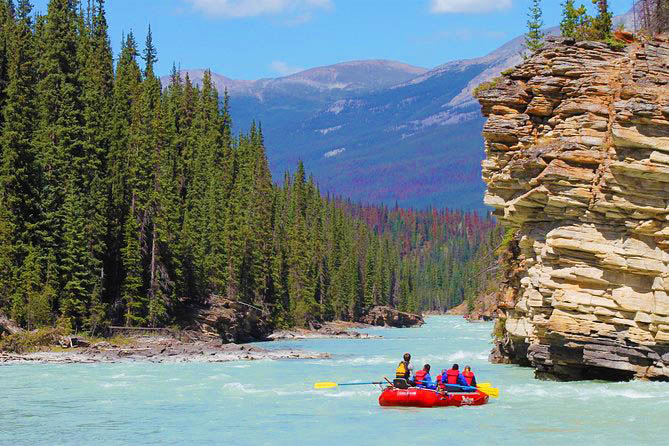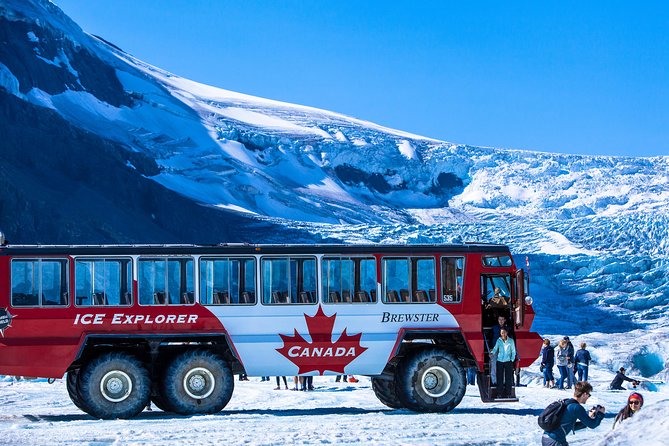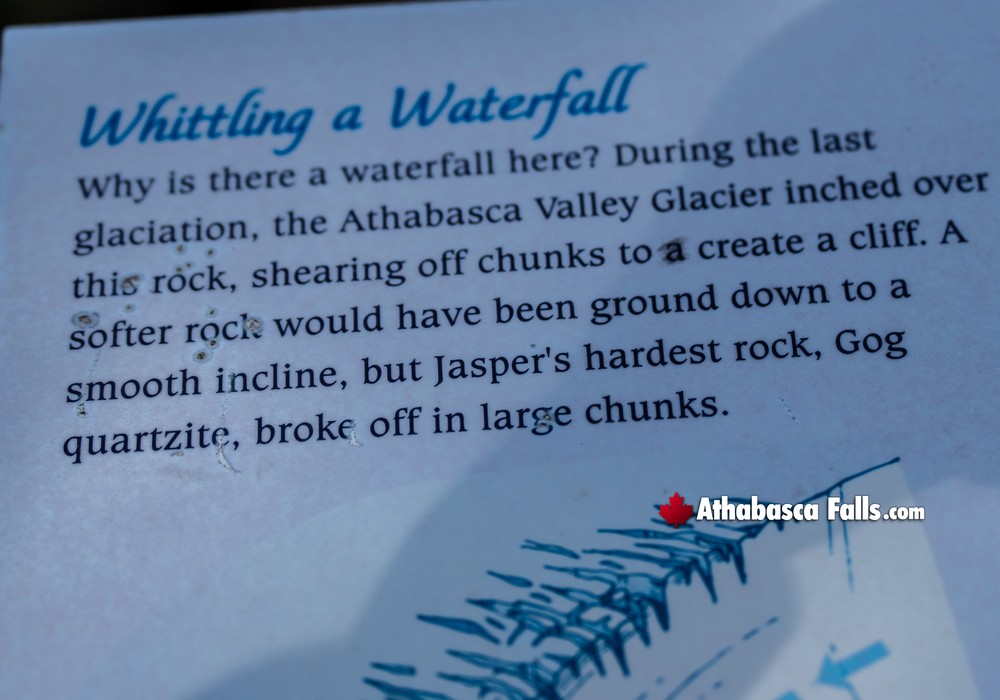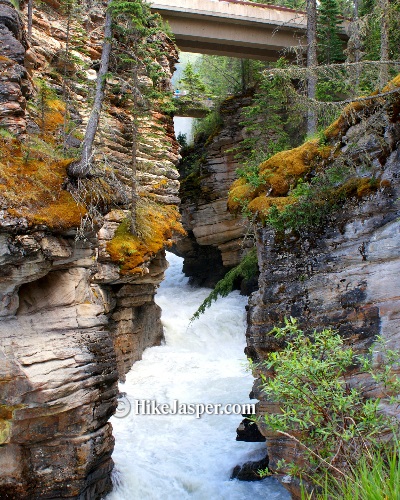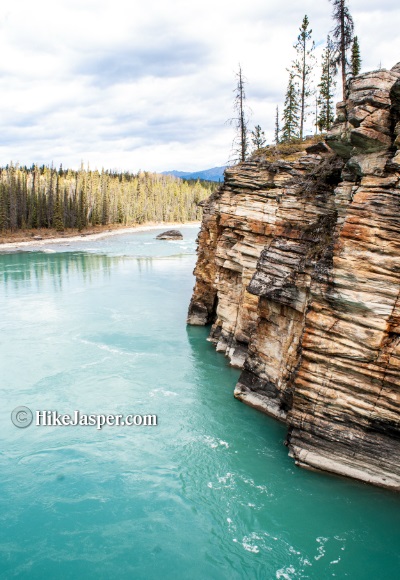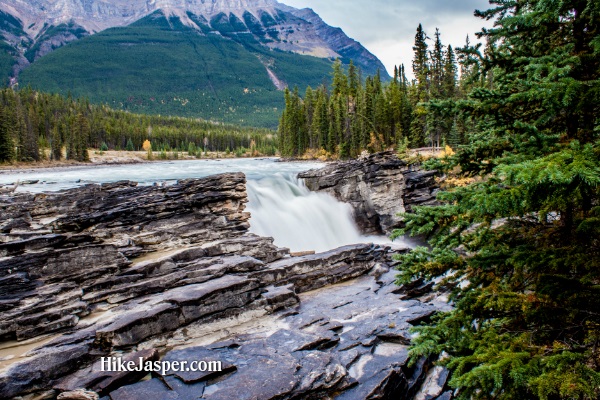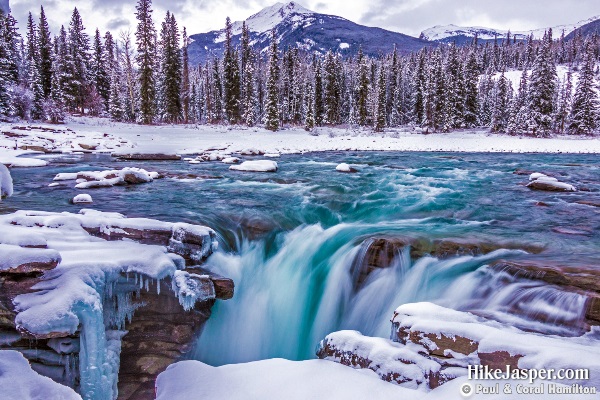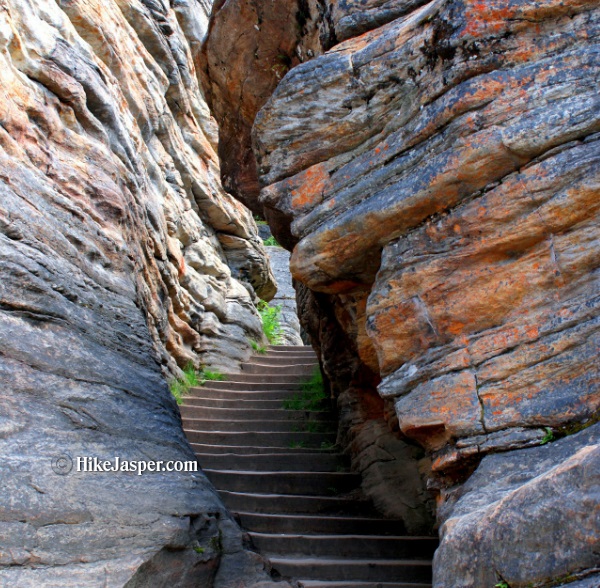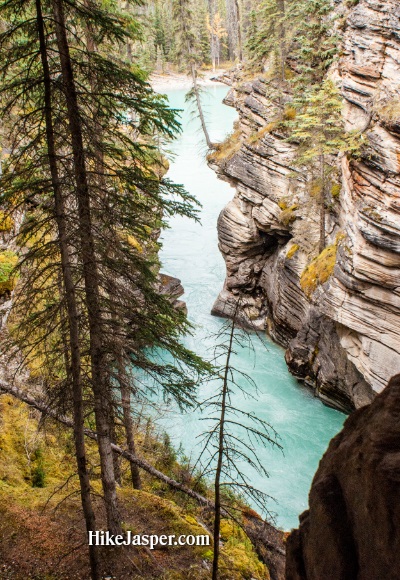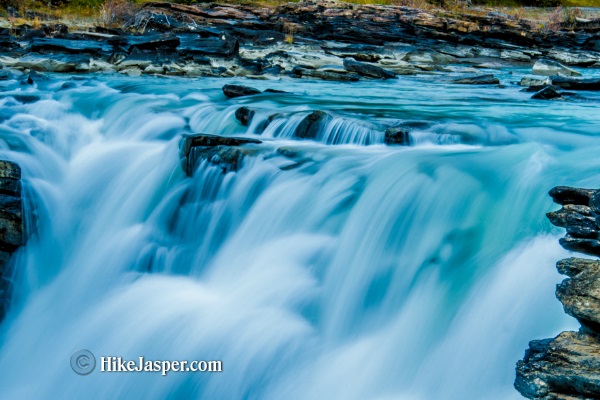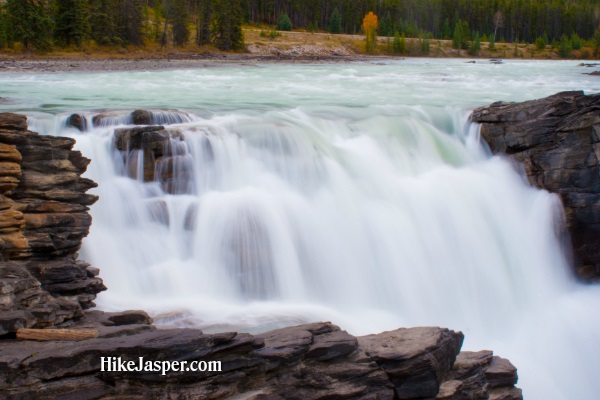Whittling a Waterfall into Athabasca Falls Over Time
Whittling a Waterfall is a fitting metaphor for what nature is doing at Athabasca Falls-a slow, relentless carving of stone by water, year after year. Just like a woodcarver shaping their craft with careful, repeated strokes, the Athabasca River steadily whittles away at the rock beneath it. The falls plunge over a shelf of incredibly hard quartzite, yet even this tough stone yields to the persistent scouring of water filled with sand, gravel, and glacial silt. Every spring, as the snowpack melts and the river swells, the force intensifies-deepening channels, hollowing out potholes, and eroding cracks. Over centuries, this process has dramatically changed the landscape, transforming a simple riverbed into a narrow gorge with thundering falls, mist-filled chasms, and curved canyon walls. What you see today at Athabasca Falls is a frozen moment in an ongoing natural sculpture-one that continues to be shaped with every drop of rushing water.
Waterfalls form canyons through a powerful process of erosion and geological layering over thousands-or even millions-of years. It typically begins when a river flows over rock layers of varying hardness. A waterfall forms where hard, resistant rock (like quartzite or basalt) overlays softer, more easily eroded material (like limestone or shale). As water plunges over the edge, it starts eroding the softer rock beneath and behind the falls more quickly than the harder caprock. This undercutting eventually causes chunks of the hard rock to collapse, gradually moving the waterfall upstream. At the same time, the plunging water carries sediment and rocks that scour the riverbed and carve out a deep, narrow plunge pool at the base. Over time, the persistent pounding and swirling of water in the plunge pool deepens and extends into the landscape, forming a steep-walled canyon. At places like Athabasca Falls, this erosion is enhanced by seasonal glacial meltwater and sediment, continuously deepening and lengthening the canyon while reshaping its walls into sculpted curves and dramatic chutes.
At Athabasca Falls, the formation of the canyon is a textbook example of how a waterfall gradually carves its way into the landscape. The falls plunge over a ledge of extremely hard quartzite, which sits atop softer limestone. Over time, the force of the Athabasca River-especially during spring melt-has worn away the softer rock underneath and behind the falls faster than the hard rock above. This process, called undercutting, causes sections of the upper quartzite to collapse, shifting the waterfall slowly upstream. Meanwhile, the falling water crashes into the plunge pool below, swirling with gravel and glacial silt that acts like sandpaper. These sediments scour the rock, cutting deeper and deeper into the riverbed and forming a narrow gorge. Over thousands of years, this erosion has carved out the twisting canyon seen today-its walls smoothed, pocked with potholes, and shaped by the never-ending force of water and time. Athabasca Falls is still actively reshaping its canyon with each passing season.
A timeline of how waterfalls like Athabasca Falls form canyons over time..
Initial River Flow (Thousands to Millions of Years Ago)
A river-like the Athabasca-begins flowing across layers of bedrock.
Hard quartzite lies above softer limestone, setting the stage for differential erosion.
The river follows natural fractures and weaknesses in the rock.
Waterfall Formation
As the river erodes the softer limestone more quickly, a sudden drop develops.
This creates a waterfall, with the hard quartzite acting as a ledge.
The falling water increases pressure at the base, starting to carve a plunge pool.
Undercutting and Collapse
The plunge pool deepens as swirling water, gravel, and sand erode the softer rock below the hard caprock.
Eventually, the unsupported quartzite above collapses.
The waterfall "retreats upstream," leaving behind a deeper channel.
Canyon Deepening
As the waterfall recedes, it cuts a narrow, steep-walled canyon into the landscape.
Erosion intensifies during spring melts, when glacial runoff carries heavy sediment loads.
Potholes, curved walls, and deep grooves are formed by spinning rocks and constant abrasion.
Ongoing Erosion (Present Day)
Athabasca Falls continues to erode its canyon each year.
The gorge grows slightly deeper and more sculpted over time.
New mini-channels and potholes may form during high flow periods.
Athabasca Falls remains an active geological feature, still in the process of being shaped.
Hiking Athabasca Falls
 Tempestt C.. Beautiful Any Time of Year!
Tempestt C.. Beautiful Any Time of Year!
 Stephen D.. A Spectacular Feature
Stephen D.. A Spectacular Feature
 JohnOmaha_Nebraska.. Blown away!
JohnOmaha_Nebraska.. Blown away!
 CESAR AYLLON.. Strength of Nature
CESAR AYLLON.. Strength of Nature
